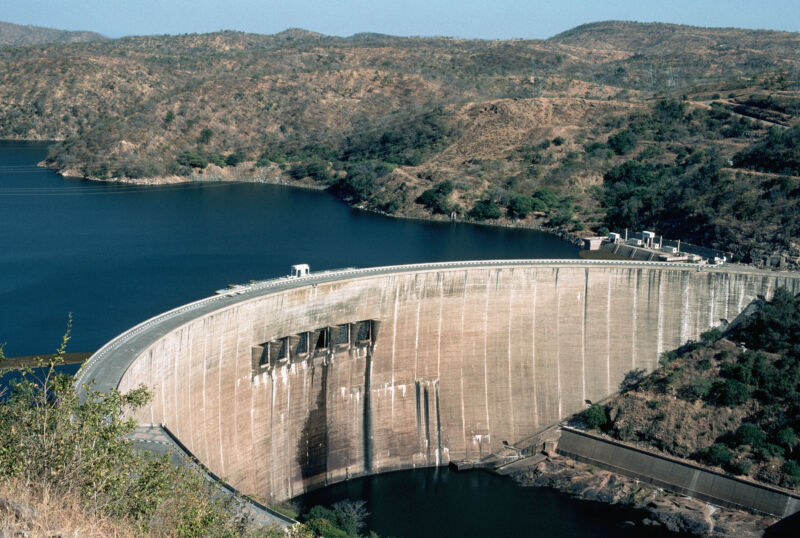
Enlarge / The Kariba Dam in Zimbabwe. (credit: Robert Holmes)
One of the big challenges we face regarding climate change is that we have to lower our emissions at a time when energy consumption is likely to grow. Many countries in the Global South will seek some combination of expanding access to the electric grid, increasing grid reliability, and expanding grid capacity to meet rising demand. It's estimated that demand in Africa will increase by roughly five percent a year for some time. Handling that increase while reducing emissions will be a challenge.
As things currently stand, African nations are primarily served by a mix of large hydroelectric plants—a number of smaller nations already have nearly emissions-free grids—and fossil fuels. Most plans for limiting carbon emissions going forward have involved expanding hydropower, and there are plans for adding about 100 GigaWatts of new capacity in the coming decades. But the rapid drop in the cost of wind and solar power raises questions as to whether those plans still make sense.
In many cases, the answer is no, according to a new study. Instead, it suggests that only about half of the hydropower projects make economic sense and that many African countries are better off moving ahead with other renewables. By 2050, it's estimated that half of Africa's electricity could come from wind and solar.
Read 12 remaining paragraphs | Comments
